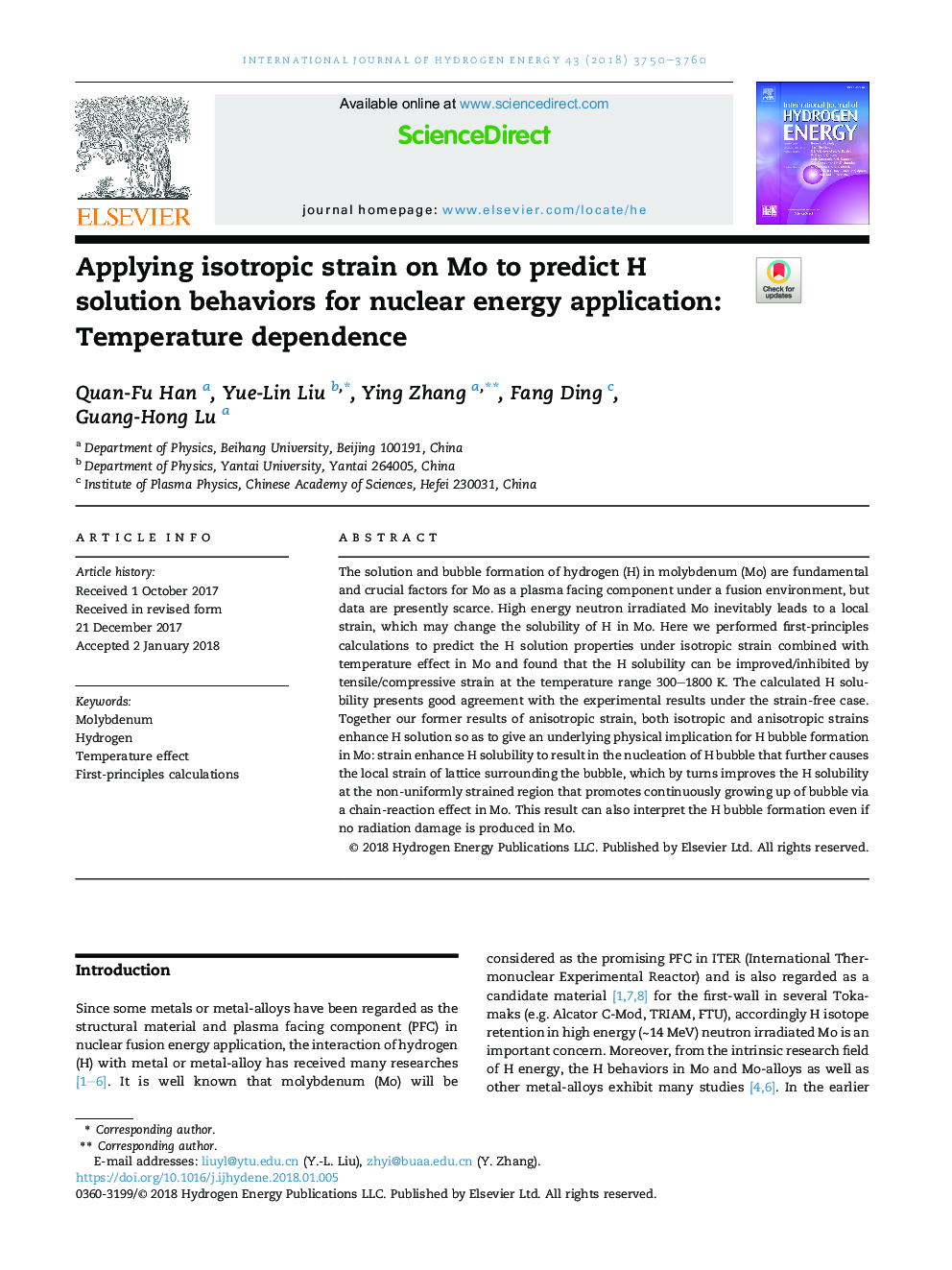| Article ID | Journal | Published Year | Pages | File Type |
|---|---|---|---|---|
| 7707628 | International Journal of Hydrogen Energy | 2018 | 11 Pages |
Abstract
The solution and bubble formation of hydrogen (H) in molybdenum (Mo) are fundamental and crucial factors for Mo as a plasma facing component under a fusion environment, but data are presently scarce. High energy neutron irradiated Mo inevitably leads to a local strain, which may change the solubility of H in Mo. Here we performed first-principles calculations to predict the H solution properties under isotropic strain combined with temperature effect in Mo and found that the H solubility can be improved/inhibited by tensile/compressive strain at the temperature range 300-1800Â K. The calculated H solubility presents good agreement with the experimental results under the strain-free case. Together our former results of anisotropic strain, both isotropic and anisotropic strains enhance H solution so as to give an underlying physical implication for H bubble formation in Mo: strain enhance H solubility to result in the nucleation of H bubble that further causes the local strain of lattice surrounding the bubble, which by turns improves the H solubility at the non-uniformly strained region that promotes continuously growing up of bubble via a chain-reaction effect in Mo. This result can also interpret the H bubble formation even if no radiation damage is produced in Mo.
Related Topics
Physical Sciences and Engineering
Chemistry
Electrochemistry
Authors
Quan-Fu Han, Yue-Lin Liu, Ying Zhang, Fang Ding, Guang-Hong Lu,
